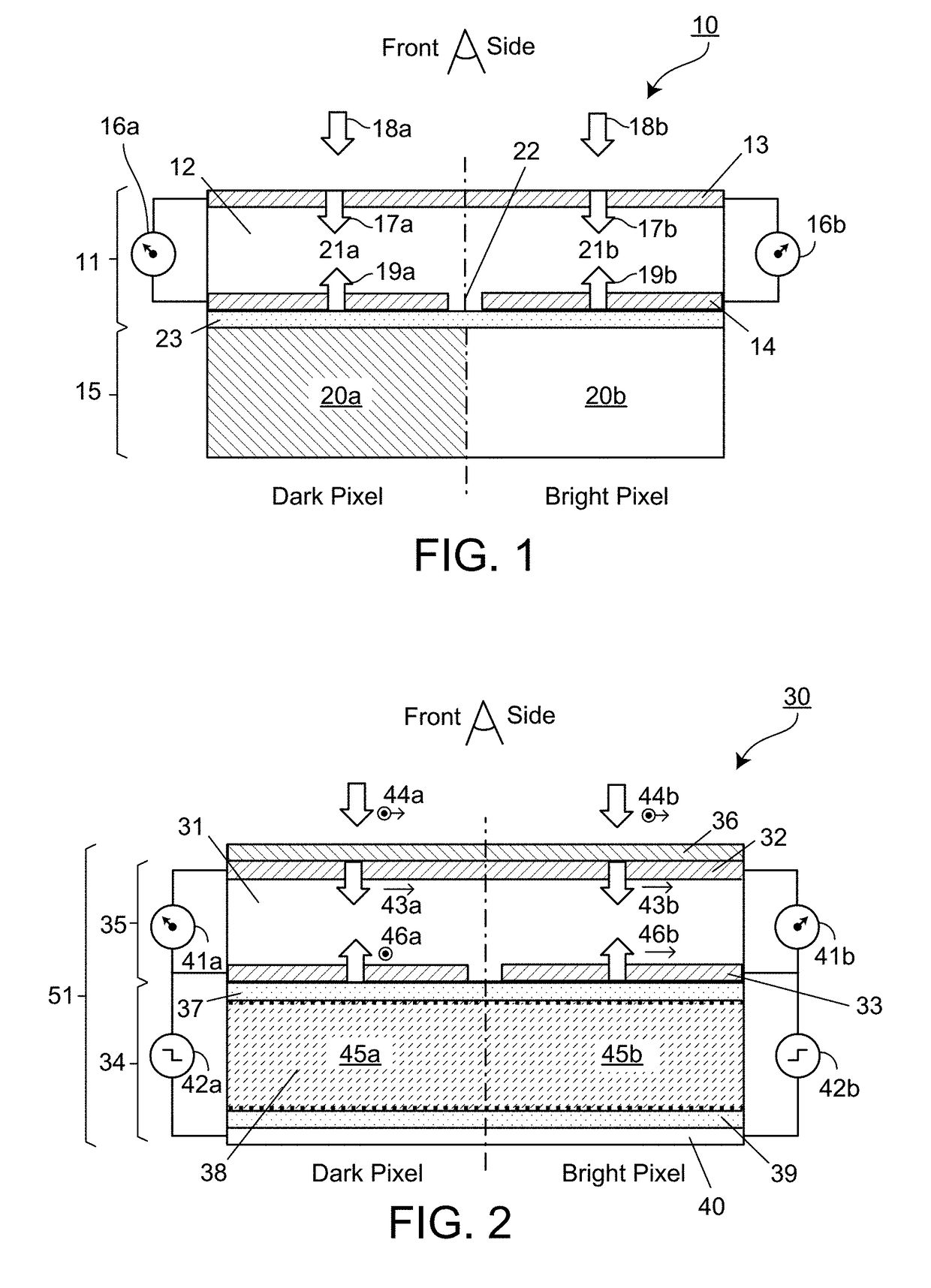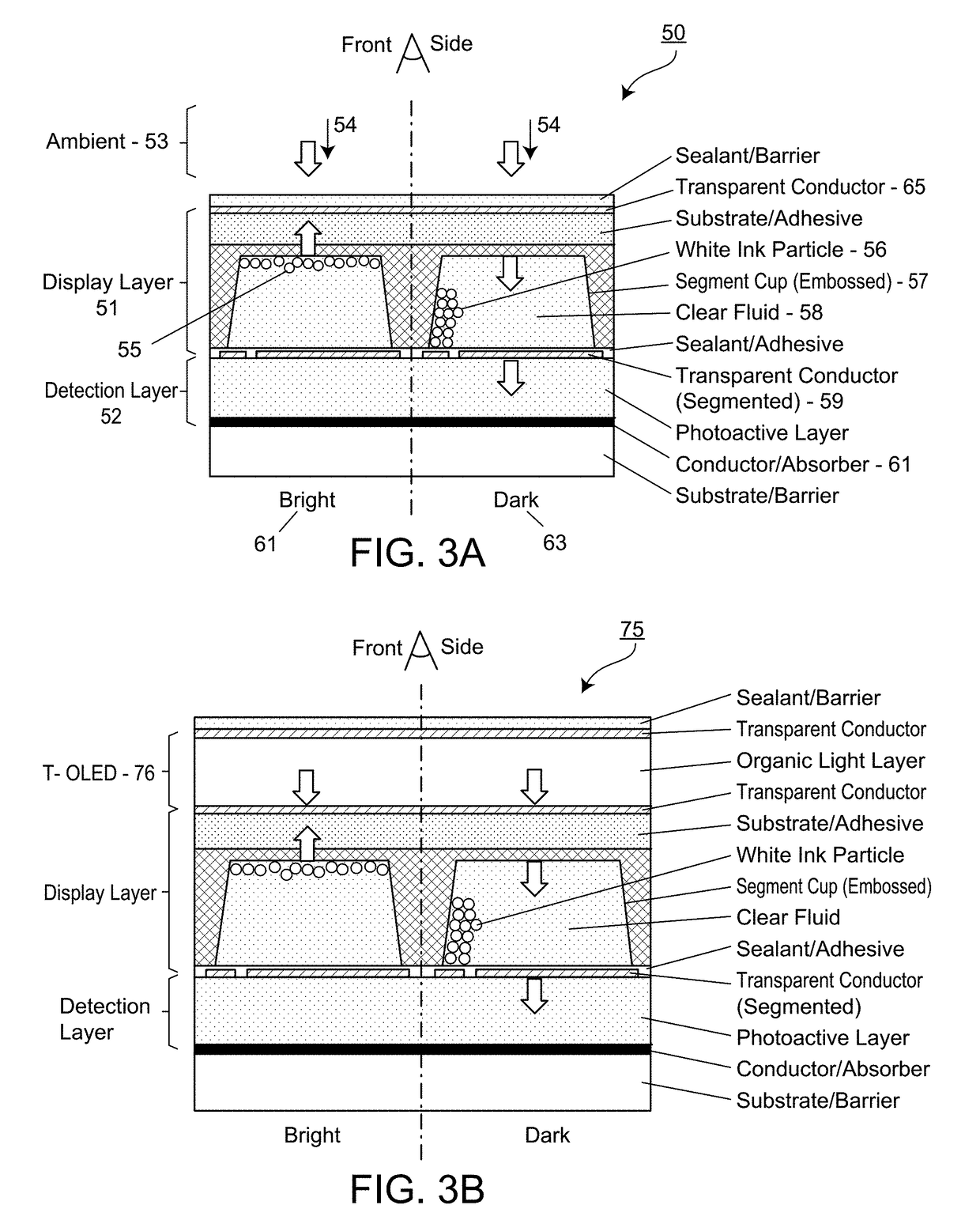Optically determining messages on a display
a display and message technology, applied in the field of electronic display design, manufacture and use, can solve the problems of message imperceptible to the reader, message could not be communicated to the reader, product is spoiled or otherwise unusable,
- Summary
- Abstract
- Description
- Claims
- Application Information
AI Technical Summary
Benefits of technology
Problems solved by technology
Method used
Image
Examples
embodiment 820
[0136]In FIG. 23 an alternative embodiment 820 is shown where the shutter 823 is positioned in-between the back light 826 and the photo sensitive layer 822. The photo sensitive layer 822 now senses the switching state of the backside of the display. For some reflective displays, such as electrophoretic E Ink 821, this results in a detection of the inverse state as compared to the state at the viewing side. This embodiment can also be well used for shutter like display effects, such as LC, instead of reflective E Ink. In that case the front light is omitted, but the rest of the stack is the same. Again, it is also possible to pixelate both the photo sensor and the shutter, such that the combined resolution allows for per display pixel sensing.
[0137]In FIG. 24 an embodiment 830 using a shutter 833 is shown for a reflective display that is switched between a reflective state and a transparent state, such as a Cholesteric Texture Liquid Crystal (CTLC) display layer 835. The shutter agai...
embodiment 850
[0139]In FIG. 26 a simplified embodiment 850 is shown where the shutter function 853 has been integrated into the emissive display layer. When the emissive layer is showing the image to the viewer, it can modulate each pixel at a high speed, such that the photo sensitive layer can detect the change in light and thereby can detect the correct switching state of the pixel. This can be done with the same methods described for drive schemes of the shutter above.
[0140]In FIG. 27 the embodiment 860 of the emissive display with the shutter 863 and photo sensitive layer 862 in front of the display is shown. The advantage of this embodiment is that the emission of the display is unidirectional towards the viewer. The disadvantage is that more layers are now between the display and the viewer including the shutter that needs to be operated. Of course the integrated shutter function into the emissive layer can be used here as well, as shown in device 850.
embodiment 870
[0141]In FIG. 28 an embodiment 870 is shown where a shutter 873 display effect is used, both to display the image and to function as the shutter for the photo sensitive layer 872. By using the high-speed per pixel switching as described above the user will not see the per pixel sensing while the image is displayed. This is very similar to the embodiment proposed in FIG. 26, but now using a shutter display effect with a backlight. The sensing is now done as follows: while the (static) image is displayed the shutter display effect switches every pixel individually to the inverse state and back again to the original state at high speed (50 Hz or higher). By doing this multiple times (50 times for example) the photo sensitive layer registers the state of the pixel by a change in the light falling on the sensor. Other drive schemes, as discussed above are also possible. This way the user still sees the (static) image, while the sensor registers what is displayed. Of course the sensor wil...
PUM
 Login to View More
Login to View More Abstract
Description
Claims
Application Information
 Login to View More
Login to View More - R&D
- Intellectual Property
- Life Sciences
- Materials
- Tech Scout
- Unparalleled Data Quality
- Higher Quality Content
- 60% Fewer Hallucinations
Browse by: Latest US Patents, China's latest patents, Technical Efficacy Thesaurus, Application Domain, Technology Topic, Popular Technical Reports.
© 2025 PatSnap. All rights reserved.Legal|Privacy policy|Modern Slavery Act Transparency Statement|Sitemap|About US| Contact US: help@patsnap.com



